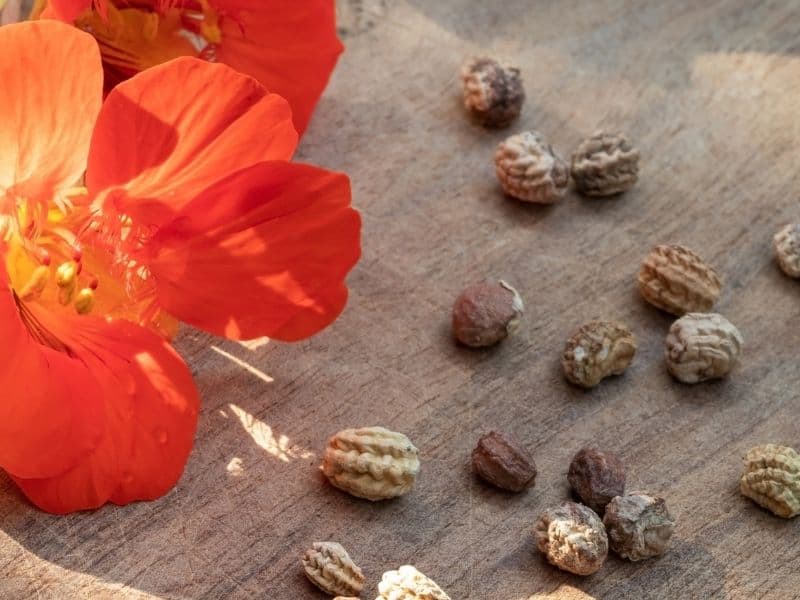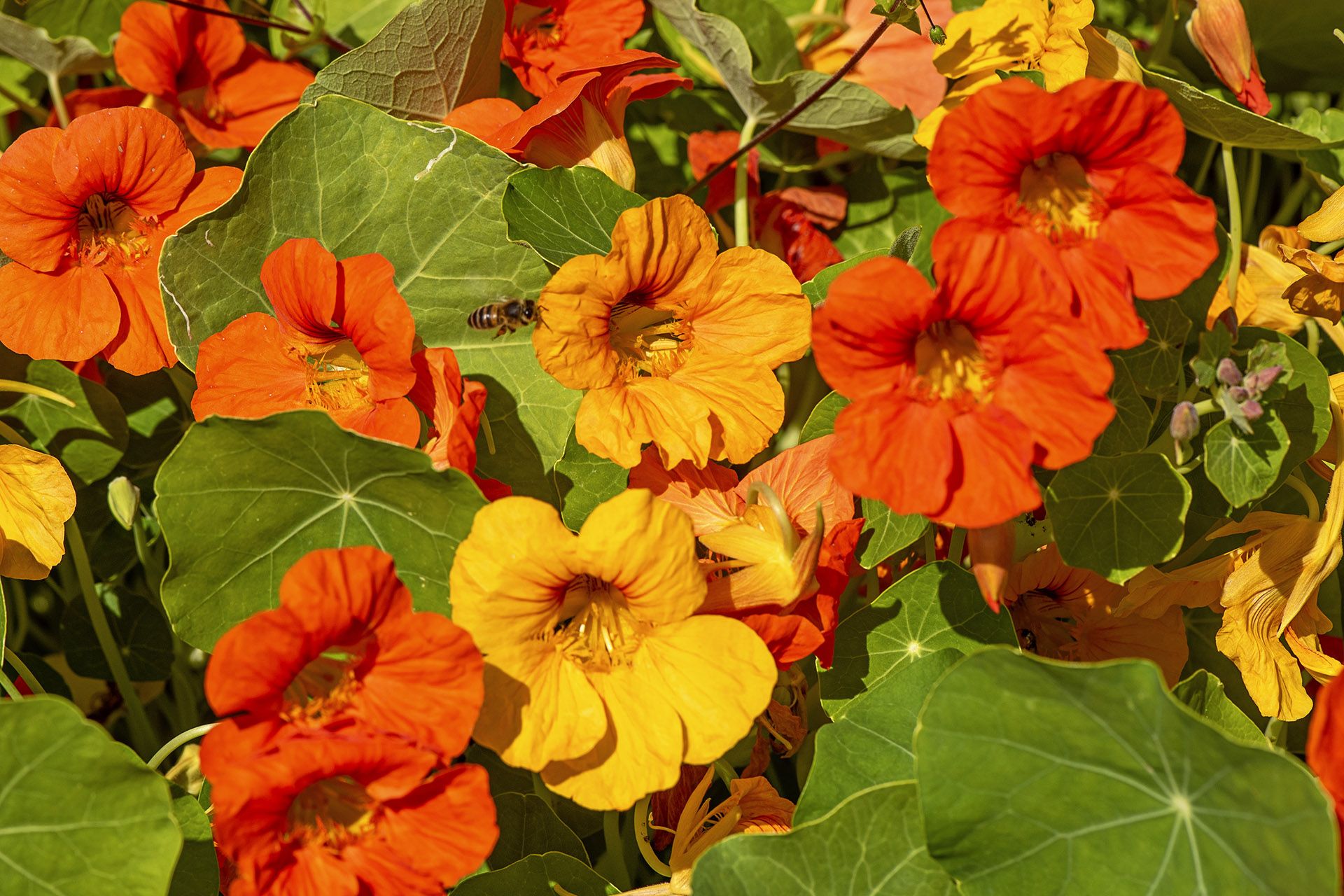Why Nasturtium Seeds Need a Little Planning
Nasturtiums are a popular, easy-to-grow flower that can add a burst of color and vibrancy to any garden or indoor space. With their delicate, crepe-paper-like petals and spicy, peppery flavor, it’s no wonder why many gardeners and flower enthusiasts are drawn to these charming blooms. However, to ensure optimal growth and blooming, it’s essential to understand the importance of proper timing when sowing nasturtium seeds. Knowing when to sow nasturtium seeds can make all the difference in achieving a successful harvest. By planning ahead and considering factors such as climate, region, and frost dates, gardeners can set themselves up for success and enjoy a bountiful crop of these beautiful flowers.
Understanding Nasturtium Seed Germination
Nasturtium seeds require specific conditions to germinate successfully. The ideal temperature for germination is between 60°F to 70°F (15°C to 21°C), with optimal germination occurring at 65°F (18°C). Moisture is also crucial, as nasturtium seeds need consistent moisture to break dormancy. It’s essential to keep the soil consistently moist during the germination period, but not waterlogged, which can lead to rot and poor germination. In terms of light, nasturtium seeds can germinate in partial shade to full sun, but indirect light is recommended to prevent overheating. By understanding these ideal conditions, gardeners can increase the chances of successful germination and set their nasturtiums up for optimal growth and blooming.
How to Determine the Best Sowing Time for Your Region
Determining the best time to sow nasturtium seeds is crucial for optimal growth and blooming. The ideal sowing time varies depending on the climate, region, and frost dates. In general, nasturtiums thrive in temperate climates with mild winters and cool summers. In regions with frost, it’s essential to wait until the last frost date has passed before sowing seeds directly outdoors. To determine the best sowing time for your region, consult online resources such as the USDA Plant Hardiness Zone Map or consult with local nurseries or gardening experts. They can provide valuable insights into the specific growing conditions and frost dates in your area. Additionally, consider the average temperature and moisture levels in your region, as nasturtiums prefer cooler temperatures and consistent moisture. By understanding the specific growing conditions in your region, you can time your nasturtium seed sowing perfectly, ensuring a successful and bountiful harvest. Remember, when to sow nasturtium seeds is a critical factor in their success, so take the time to research and plan accordingly.
The Role of Weather in Nasturtium Seed Sowing
Weather conditions play a significant role in nasturtium seed germination and growth. Temperature, rainfall, and sunlight are all critical factors that can affect the success of your nasturtium crop. When it comes to temperature, nasturtiums prefer cooler temperatures, between 60°F to 70°F (15°C to 21°C), for optimal germination. Extreme temperatures, either hot or cold, can inhibit germination and lead to poor growth. Rainfall is also essential, as nasturtiums require consistent moisture to thrive. However, excessive rainfall can lead to waterlogged soil, which can be detrimental to the seeds. Sunlight is also crucial, as nasturtiums require at least 6 hours of direct sunlight per day to promote healthy growth. To adapt to different weather patterns, it’s essential to monitor weather forecasts and adjust your sowing schedule accordingly. For example, if a heatwave is predicted, it may be best to delay sowing until the weather cools down. By understanding the role of weather in nasturtium seed sowing, you can make informed decisions about when to sow nasturtium seeds and ensure optimal growth and blooming.
Indoor vs. Outdoor Sowing: Which is Best for Nasturtiums?
When it comes to sowing nasturtium seeds, one of the most critical decisions is whether to start them indoors or directly outdoors. Both methods have their pros and cons, and understanding these can help you make an informed decision about when to sow nasturtium seeds. Sowing nasturtium seeds indoors 4-6 weeks before the last frost date can provide a head start on the growing season, allowing the seedlings to develop strong roots and stems before being transplanted outdoors. This method also provides more control over the growing conditions, such as temperature and light, which can improve germination rates. On the other hand, direct outdoor sowing can be more convenient and eliminates the need for transplanting. However, it may expose the seeds to unpredictable weather conditions, which can affect germination and growth. Ultimately, the choice between indoor and outdoor sowing depends on your personal preference, climate, and available resources. By considering these factors, you can determine the best approach for your nasturtium seeds and ensure optimal growth and blooming.
Preparing the Soil for Nasturtium Seed Sowing
Before sowing nasturtium seeds, it’s essential to prepare the soil to ensure optimal growth and blooming. The right soil preparation can make a significant difference in the success of your nasturtium crop. When deciding when to sow nasturtium seeds, it’s crucial to consider the soil conditions. Start by choosing a well-draining soil mix that is rich in organic matter. Nasturtiums prefer a slightly acidic to neutral soil pH, ranging from 6.0 to 7.0. Remove any weeds or debris from the soil to prevent competition for nutrients and water. Add a 2-inch layer of compost or well-rotted manure to the soil to improve its fertility and structure. Till the soil to a depth of 8-10 inches to loosen and aerate it. If your soil is heavy clay or sandy, mix in some organic matter to improve its drainage and water-holding capacity. By preparing the soil properly, you’ll be creating an ideal environment for your nasturtium seeds to germinate and thrive.
Sowing Nasturtium Seeds: A Step-by-Step Guide
When deciding when to sow nasturtium seeds, it’s essential to follow a step-by-step guide to ensure successful germination and growth. Here’s a comprehensive guide to help you get started:
Step 1: Prepare the Soil – Before sowing nasturtium seeds, make sure the soil is prepared according to the guidelines outlined in the previous section. This includes choosing the right soil mix, removing weeds, and adding organic matter.
Step 2: Sow Seeds at the Correct Depth – Sow nasturtium seeds about 1-2 inches deep and 1-2 inches apart. You can also sow them in rows, with the seeds spaced about 6-8 inches apart. Cover the seeds with a thin layer of soil.
Step 3: Water Correctly – Water the soil gently but thoroughly after sowing the seeds. Keep the soil consistently moist during the germination period, which usually takes 7-10 days.
Step 4: Provide Optimal Conditions – Nasturtium seeds require full sun to partial shade and temperatures between 60°F to 70°F (15°C to 21°C) to germinate. Make sure to provide the right conditions for optimal growth.
Step 5: Thin Seedlings – Once the seedlings emerge, thin them out to about 6-8 inches apart. This will give the remaining seedlings enough space to grow and receive adequate sunlight and nutrients.
By following these steps, you’ll be able to successfully sow nasturtium seeds and enjoy a bountiful harvest of colorful flowers. Remember to consider the specific growing conditions in your region and adjust the sowing time accordingly. With proper planning and care, you’ll be able to enjoy the beauty of nasturtiums in your garden.
Troubleshooting Common Issues with Nasturtium Seed Sowing
Despite proper planning and care, issues can still arise when sowing nasturtium seeds. Here are some common problems that may occur and tips on how to overcome them:
Poor Germination – If nasturtium seeds fail to germinate, it may be due to inadequate moisture, incorrect temperature, or insufficient light. Check the soil moisture and temperature, and ensure the seeds are receiving sufficient light. Consider re-sowing the seeds in a different location or at a different time.
Thin Seedlings – If the seedlings are weak and spindly, it may be due to overcrowding, inadequate light, or poor soil quality. Thin out the seedlings to about 6-8 inches apart, and ensure they are receiving sufficient light and nutrients. Consider transplanting the seedlings to a location with better soil quality.
Pest Problems – Nasturtiums can be susceptible to pests such as aphids, whiteflies, and spider mites. Keep an eye out for signs of infestation, and use organic pest control methods such as neem oil or insecticidal soap to control the problem.
Fungal Diseases – Fungal diseases such as damping off and root rot can affect nasturtium seedlings. Ensure good air circulation, avoid overwatering, and treat the soil with a fungicide if necessary.
By being aware of these common issues and taking steps to prevent or address them, you can increase the chances of success when sowing nasturtium seeds. Remember to research specific growing conditions in your region and adjust the sowing time accordingly. With proper care and attention, you’ll be able to enjoy a bountiful harvest of colorful nasturtium flowers.







